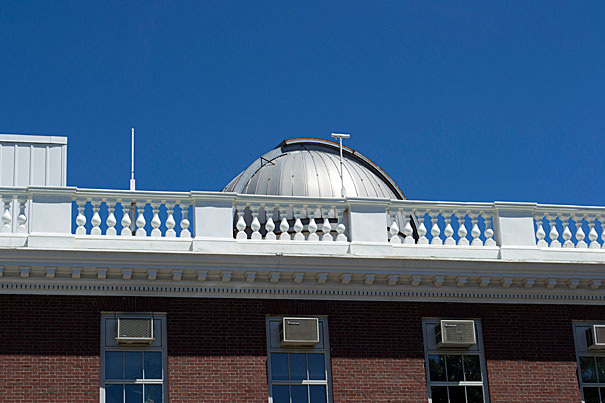
Graduate student Eli Visbal and colleagues have simulated how stars formed in the universe’s infancy clump together into massive web-like structures. The key to the simulation, he said, was the inclusion of a 2010 discovery that normal matter, such as hydrogen gas, and dark matter — which makes up more than 80 percent of the universe — move through the universe at different speeds.
Thomas Earle/Harvard Staff Photographer
Stars in the making
Research may sharpen view of developing universe
For decades, scientists have sought to develop newer and more powerful ways to peer into the far reaches of the cosmos and into the early days of the universe, both with optical telescopes and powerful radio telescopes.
But a new paper, published last month in Nature and authored by Eli Visbal, a graduate student in Harvard’s Physics Department, with colleagues from the California Institute of Technology and Tel Aviv University, suggests that it may be far easier than commonly thought to peer deep into the universe’s history and observe the telltale signs of the first stars and galaxies.
Using powerful computer models, Visbal and colleagues simulated how stars formed in the universe’s infancy clump together into massive web-like structures. The key to the simulation, he said, was the inclusion of a 2010 discovery that normal matter, such as hydrogen gas, and dark matter — which makes up more than 80 percent of the universe — move through the universe at different speeds.
Those web-like structures, Visbal said, hold the prospect of greatly simplifying the process of detecting the signatures of the earliest stars in the universe.
“This is the first simulation of the three-dimensional distribution of stars that includes this relative velocity effect,” Visbal said. “What was clear from looking at our simulation was that, based on the large fluctuations in these ‘web’ formations, observing early stars should be far easier than we previously thought.”
Astronomers hunting for early stars aren’t hunting for the actual stars, but signatures of their existence. Among the best such signatures, Visbal said, is the 21-centimeter wavelength emission given off by hydrogen gas as it is warmed by the stars.
The challenge, however, is that the radiation from early stars is often obscured by background radiation produced by the Milky Way and other nearby galaxies.
The web-like structures identified in Visbal’s simulations, however, suggest that astronomers should be able to identify early stars by searching for fluctuations in the 21-centimeter emission. By identifying areas that emit high amounts of the radiation, astronomers should be able to spot early stars.
One factor, Visbal explained, is the sheer size — as much as 400 million light-years across — of the “web” of early stars. To observe a region that size, astronomers need only about two-thirds of a degree of angular resolution.
“When you increase the relative velocity effect, you get these huge regions where star formation is suppressed,” Visbal explained. “The result is that you don’t need particularly high-resolution telescopes to make these observations. That’s why it’s more feasible to see these structures.”
Based on the simulations, Visbal said, astronomers should be able to study stars formed when the universe was just 180 million years old. (The universe is 14.6 billion years old.) Current techniques allow astronomers to see objects formed at 800 million years.
Detecting such early stars, Visbal said, could be a critical step in a wider understanding of the universe then and now.
“Structure in the universe is formed hierarchically,” he said. “This means that larger objects are built from the mergers of smaller ones. So, in some sense, if we are able to determine how the first stars and galaxies formed, we can understand the building blocks which make up large objects in the current universe.”
Researchers will now turn to making real-world observations to determine if the simulation’s predictions are accurate.
“Radio observatories are being used right now to observe 21-centimeter emission from much later times,” Visbal said. “Similar facilities, designed to observe different frequencies, will need to be constructed to detect the signature of the first stars.”






